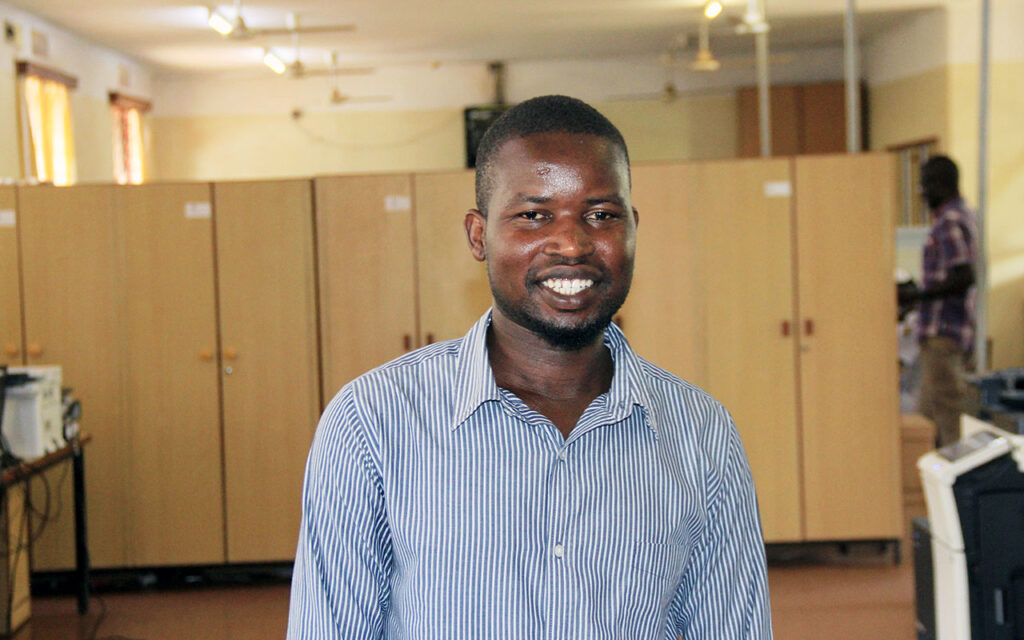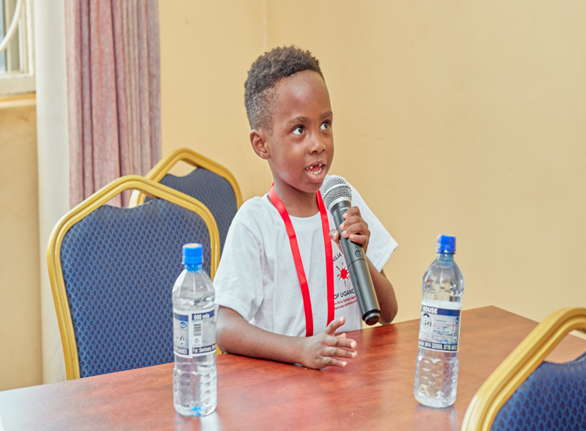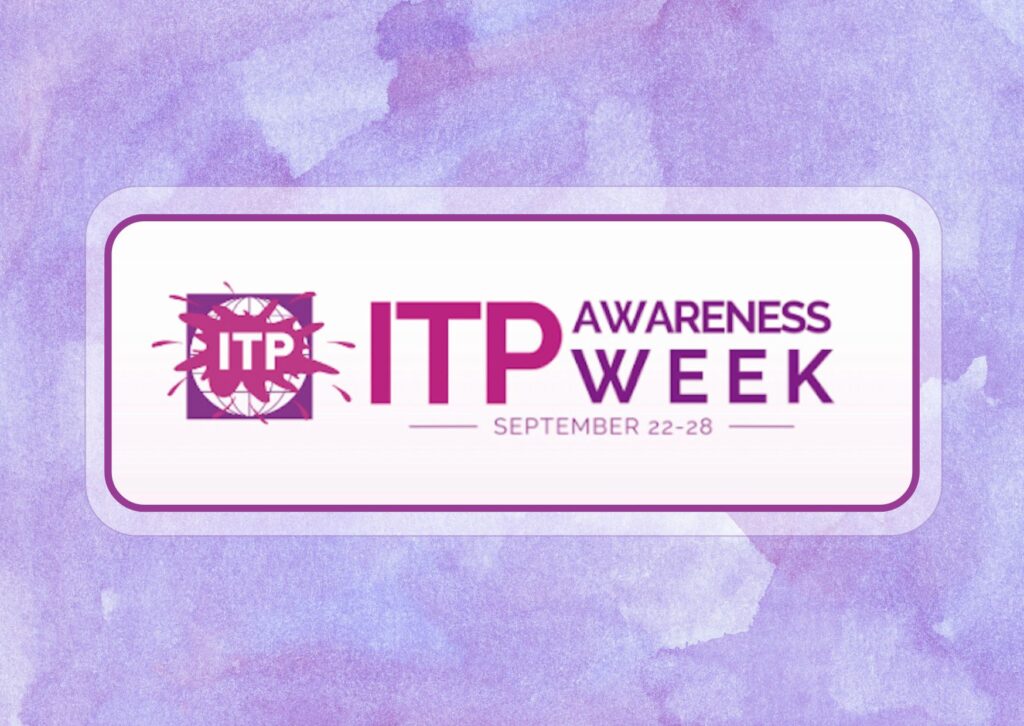First step to care: Haemophilia diagnosis in Uganda
Earlier this month, the World Federation of Hemophilia (WFH) announced the theme for next year’s World Hemophilia Day: “Diagnosis: First step to care”.
This resonates loudly with the subject of the latest episode of Haemcast, in which Morris Okello (pictured) shares his experience of living with haemophilia B with Haemnet’s Director of Research, Dr Kate Khair.

Morris lives in Northern Uganda and is now in his late twenties. Recalling his childhood, he tells of numerous traumatic injuries made worse by a then undiagnosed underlying condition. He was in his early teens by the time he had a confirmed haemophilia diagnosis.
So, why did it take so long before Morris was diagnosed? Put simply, alongside lack of knowledge around haemophilia, the skills and facilities required to make a diagnosis were not available.
Haemophilia diagnosis in Uganda
Morris explains that his haemophilia diagnosis actually came from the UK, through links between “Dr Ray” (Raymond Towney), a colleague of his father (a nurse) at Lacor Hospital, and staff at Great Ormond Street Hospital in London. Is it strange to be diagnosed in a country that you don’t live or work in? Not in Africa, says Dr Kate Khair.
“Actually, this is very common in Africa,” she says. “Very many of the countries couldn’t or still can’t measure assays for Factor VIII or Factor IX. At the time Morris was diagnosed, facilities did not exist at all in Uganda.”
Morris was diagnosed in 2009, two years before the first submission to the WFH Annual Global Survey by the then newly founded Haemophilia Foundation of Uganda (HFU). At that time, among a population of over 34.5 million, only 15 people were known to have haemophilia.
Fast forward to the most recently published WFH survey (2023), the Ugandan population has grown to over 48.5 million. The number of people known to have haemophilia has also grown, standing at 369. There’s evidence of a nascent growth in awareness of other bleeding disorders, too – three people in Uganda are known to have von Willebrand disease.
However, in a population of 48.5 million, it’s estimated that there should be at least 4,500 people with haemophilia. The fact remains that haemophilia and other bleeding disorders are underdiagnosed in Uganda – as they are in many African countries.
First steps forward
Looking at the bigger picture, the WFH estimates that over three quarters of people who live with haemophilia, globally, are undiagnosed. For other bleeding disorders, the rate of diagnosis is even lower. Initiatives like the WFH Humanitarian Aid Program continue to be essential in making treatment available to people with haemophilia in resource-limited countries – but they still need a diagnosis to be able to access that treatment.
Announcing the theme for World Hemophilia Day 2026, WFH President Cesar Garrido said: “Accurate diagnosis is the gateway to care for people living with bleeding disorders […] without diagnosis there is no treatment, and without treatment there is no progress.”
Awareness of haemophilia and access to haemophilia care in Uganda is certainly improving, thanks to the efforts of the HFU. Specialised care was previously provided by just one hospital. With the support of the Ugandan Ministry of Health and the global haemophilia community, the HFU initiated the set-up of satellite treatment centres and training for healthcare professionals in major regional hospitals across the country. Morris remembers one such educational event at his local hospital, which he describes as “an eye-opener to the people”.
So, things are improving – but diagnostic capacity in Uganda remains limited.
Amplifying voices
Morris is clear that the way forward has to be collaborative. This is borne out by his admiration for Agnes Kisakye, a key member of the HFU. He tells Kate that the reason he has access to Factor IX concentrate is due to her efforts, and that she inspired him to also become involved in haemophilia advocacy.
“She took that initiative and began amplifying people’s voices,” says Morris. “And it’s because of that that the whole of Uganda is now getting aware of what haemophilia is.”
For Morris, working together is the key to improving the lives of people with haemophilia.
“We need to coordinate, to come together as one, because together we can do great things,” he says.
With our thanks to Morris Okello for sharing his story with us.
Morris’s conversation with Dr Kate Khair, ‘Banana sap, mangos and factor IX: a Ugandan haemophilia B journey’, is available to stream or download here (or via your favourite podcast platform).
You can also read about Morris’s story in his own words on the website of St Mary’s Hospital Lacor (Uganda): https://www.lacorhospital.org/the-bleed-that-bred-gratitude-living-with-hemophilia/
Further reading
More information on efforts to improve haemophilia care in Uganda can be found in papers published in The Journal of Haemophilia Practice:
Holland M. A twin-track approach to developing haemophilia care in Uganda. J Haem Pract 2016; 3(2): 1-6. doi: 10.17225/jhp00090
Kasirye P, Kisakye A, Nakalyango A, Barnabas A. Processes and experiences of satellite haemophilia clinic set-ups in Uganda – a short report. J Haem Pract 2022; 9(1): 76-78. doi: 10.2478/jhp-2022-0009
Kisakye A, Kasirye PG, Muramuzi D, et al. Factors associated with delays in seeking treatment for acute bleeding among persons with haemophilia in Uganda: a cross-sectional study. J Haem Pract 2023; 10(1): 106-118. doi: 10.2478/jhp-2023-0018
You can also read Rich Gorman’s commentary on the above paper:
Gorman R. Accessing haemophilia care in Uganda. 17 April 2024 [Haemnet blog]
About the author
Kathryn Jenner is Communications and Community Manager at Haemnet Ltd.


